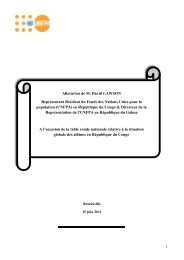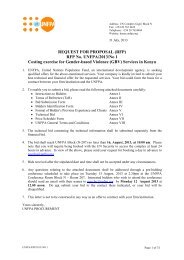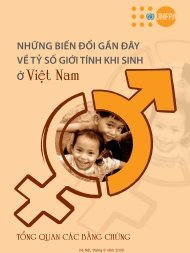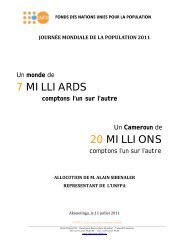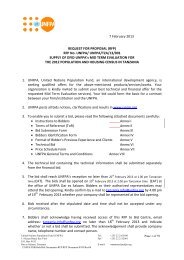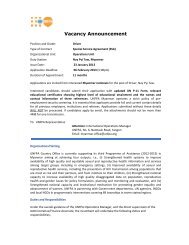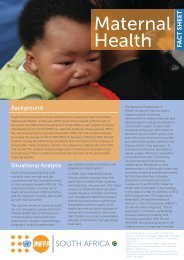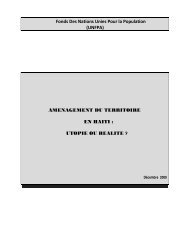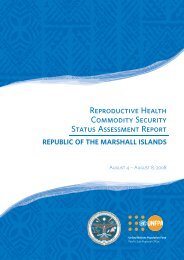MYANMAR
MYANMAR
MYANMAR
You also want an ePaper? Increase the reach of your titles
YUMPU automatically turns print PDFs into web optimized ePapers that Google loves.
23<br />
act as national focal point for environmental matters and coordinate the work of various line<br />
ministries. The NCEA will also collaborate with the National Population Council (which will<br />
be fofmed in the near future) developing environment policies, plans and promoting<br />
environmental concern. Subsequently NCEA will create an environment friendly atmosphere<br />
in the country through coordination with National Population Council and other line<br />
ministries.<br />
65. Over 50 percent of population in Myanmar is composed of young age group.<br />
Measures and programmes which provide opportunity to acquire values and skills to enable<br />
youth contributing social and economic development of the nation have been introduced by<br />
successive governments. Programmes being implemented are JEC for health, drug abuse<br />
campaigns, non-formal training of Buddhist Culture in family life, dissemination of Child to<br />
Child Message for Health, school health programmes, training on reproductive health, sports<br />
and physical fitness and other educational programmes. The Government also promotes<br />
employment opportunities for youths by introducing market economy system, promoting<br />
private sector and encouraging foreign investments. However, most of the programmes for<br />
youths are necessary to strengthen for sustainability.<br />
66. The elderly population (age 60 years and above) constitutes 7.11 percent (2.9 million)<br />
of total population. Present social and health situations of the country indicate the growth of<br />
elderly population in the future. Major support for the elderly has been provided by the<br />
families, which is the tradition and culture of Myanmar People. The National Health Plan<br />
(1993-96) includes programme for health care of the elderly. Institutions for the care of<br />
elderly have been est4blished and run by government as well as voluntary organizations and<br />
missionaries. However, the number is insufficient so that programmes for the elderly need to<br />
be expanded in view of the growing elderly population.<br />
67. Relief Programmes of disasters are being implemented by the collaboration of the<br />
Ministry of Health, the Ministry of Social Welfare and NGOs such as Red-cross<br />
Organization, Myanmar Maternal and Child Welfare Association (MMCWA), Myanmar<br />
Medical Association (MMA) etc. These programmes are running quite well with the support<br />
of the government, communities and NGOs.<br />
68. HIV / AIDS infection is an enomious threat to the country because of the rising<br />
regional and global trends. Prevention and control programmes of this fatal infection started<br />
since 1989 when HIV(+) persons were detected in the country. The intervention measures<br />
such as IEC campaigns, surveillance activities, control of sexually transmitted diseases etc.<br />
are accomplished with full support from the government and the community.




